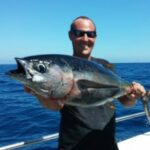How To Pick A Fishing Pole: Blanks, Line Guides, Seat, Handle
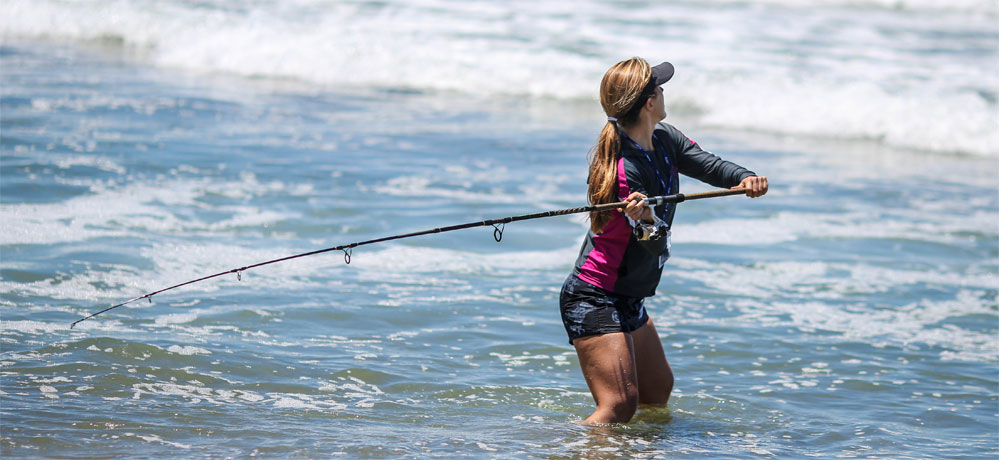
Choosing the best fishing poles is something newcomers to fishing will always struggle with. Until they have spent some time fishing, and more importantly, catching fish, they won’t get a feel for what it is that need out of a fishing pole.
In this post, we are going to take a look at the different parts that a fishing pole is made up of, how they work, and what you should be looking for from the best fishing poles. We will also talk about some products that can be used to either make your own fishing pole, or repair one that is damaged.
We also have an article here for the most expensive fishing rods that you might want to check.
Choosing the Best Fishing Pole Blanks

The blank is simply the long straight part of the fishing pole. It’s called a blank, because before you put line guides, a reel seat and handle on it, it’s completely blank! You can actually buy blanks yourself to build a rod from scratch from. For example, the Fly Logic Optimum Fast Action Graphite Fly Rod Blank. This is a high quality graphite blank that could be turned in to a great fly rod. Likewise, theDaiwa SABS40-405G Saltiga Ballistic Surf Rod Guide would make an awesome surf rod.
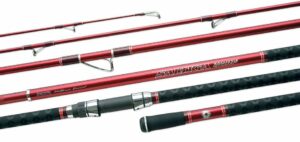
Blanks all have something called an action. The action of the rod blank will dictate how it applies power, and how much control you have over fish you are fighting. Some prefer one type, and other another type. The three actions are:
- Fast Action – This means the very top part of the rod bends very easily, but it stiffens up very fast. So in effect, it’s mostly the tip that is bending. This makes for a very powerful rod, with great control, but it is also a hard rod, you could bump fish off the hook.
- Full Action – This means that the rod can bend all the way from the very tip, to the end of the butt, making a massive C shape. A full action rod is great for fighting very large fish, put it lacks control and power to apply pressure.
- Compound Action – This is kind of a hybrid of a fast action blank and a full action bank. The tip bends the most, but the rod can bend throughout its length, but the further down the rod you come, the less it can bend.
Choosing the best fishing poles for your own taste is always going to start with deciding on the action of the blank you prefer.
Choosing the Best Fishing Pole Line Guides
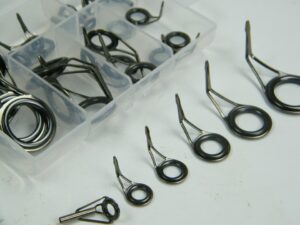 These are the hoops that are whipped on to the rod blank, for the line to run through. Most usually, they are made from steel, with a ceramic lining so the line is not damaged when it runs through them. For example, these Spinning Rod Guides. They are pretty standard line guides, and suitable for repairs or rod making.
These are the hoops that are whipped on to the rod blank, for the line to run through. Most usually, they are made from steel, with a ceramic lining so the line is not damaged when it runs through them. For example, these Spinning Rod Guides. They are pretty standard line guides, and suitable for repairs or rod making.
 Speaking about fishing pole repairs, most often it is the tip that is broken, so you can’t go wrong buy buying a few spares, you can get a variety very cheaply, for example 80x in Box Small Freshwater Fishing Rod Parts Tip Tops Stainless Repair Guides.
Speaking about fishing pole repairs, most often it is the tip that is broken, so you can’t go wrong buy buying a few spares, you can get a variety very cheaply, for example 80x in Box Small Freshwater Fishing Rod Parts Tip Tops Stainless Repair Guides.
Now, the best fishing poles have good quality, fairly tightly spaced line guides. The spacing of the line guides depends upon the action of the blank. We won’t go in to that here, it could be a post in its own right. But you want to find a fishing pole with high quality line guides, closely spaced, and with no cracks in the linings.
Choosing the Best Fishing Pole Reel Seat
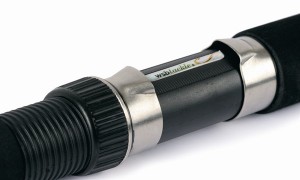
Moving on, the final part of the rod we need to look at when trying to choose the best fishing poles, is the reel seat. This is the mechanism that attaches the reel to the pole.
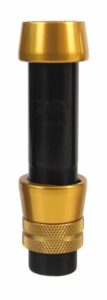 The best fishing poles have a high quality reel seat that fits the blank snugly, and is strong enough to hold a fishing reel in position under stress. Cheaper fishing poles will use something like this Stainless Steel Rubber Adjustable Geared Reel Seat. There is nothing actually wrong with this reel seat, but there are better ways of attaching the reel to the rod.
The best fishing poles have a high quality reel seat that fits the blank snugly, and is strong enough to hold a fishing reel in position under stress. Cheaper fishing poles will use something like this Stainless Steel Rubber Adjustable Geared Reel Seat. There is nothing actually wrong with this reel seat, but there are better ways of attaching the reel to the rod.
For example, this AFTCO Fishing Rod Slip-Over Reel Seat slips over the blank itself. This means it cannot fall or break off. The threaded reel clamp is also much stronger than the previous example. So the best fishing poles will have a reel seat that is a) strong enough to keep the reel in place under high strain and b) attached to the rod blank in a way so that it cannot break or fall off.
The Best Fishing Pole Handles
This subject is a point of contention between fishermen. Some fishermen think that traditional cork handles are best. Others prefer newer materials that offer better grip when wet. Some even think the best fishing poles have no handle at all, just a straight bare blank as the butt.
 The good news is, you are always free to change the way your butt grips anyway. You can use things like 300X20mm Non Slip X-TUBE Polyolefin Heat Shrink Tube. Slip it over the butt of your rod, and simply shrink it down to give a new grip.
The good news is, you are always free to change the way your butt grips anyway. You can use things like 300X20mm Non Slip X-TUBE Polyolefin Heat Shrink Tube. Slip it over the butt of your rod, and simply shrink it down to give a new grip.
So there we have it, the best fishing pole is always going to be one that has a good blank, with your preferred kind of action. Sufficient high quality line guides. A proper, solid reel seat, and whichever style of grip you prefer on the butt
 However, for something truly exceptional, you could try building your own fishing pole. It’s not actually that difficult. You could always start with a kit. Tools are pretty easy to come but, such as this set of rod building tools, a Complete Rod Building Start-Up Kit.
However, for something truly exceptional, you could try building your own fishing pole. It’s not actually that difficult. You could always start with a kit. Tools are pretty easy to come but, such as this set of rod building tools, a Complete Rod Building Start-Up Kit.
Choose your rod blank based upon your action preference. Buy some line guides that are high quality, and suitable for your rod bank. Purchase a good quality reel seat, and some material for making the butt of the rod (see also collapsible fishing rods). Put it all together using the tools we have shown above.
The best fishing poles are always the ones we make ourselves. Not because they are better than those that are mass produced. But because they are unique, nobody else has a fishing pole quite like it. It is entirely made for you, how you want it made. I good self-made fishing pole is something you keep for the rest of your life.
As an Amazon Associate, Fishermen's Angle earns from qualifying purchases. We get commissions for purchases made through links in this post.
